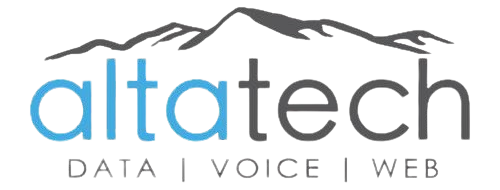Technology plays a huge role in business IT infrastructure management is key it includes network management and IT governance which are crucial for success.
IT service management (ITSM) is at the heart of this it makes processes work together smoothly this leads to better operational efficiency and productivity.
A visually organized IT infrastructure management setup, featuring interconnected servers, networking devices, and cloud services, surrounded by digital security elements like firewalls and encryption symbols. Include vibrant data flow visuals and monitors displaying system performance metrics, all set in a modern tech environment with a sleek, professional aesthetic.
This article will look at the important parts of IT System Management we see how strong IT systems help businesses they reduce risks and help achieve goals.
Things like infrastructure, applications, data and security are important they don’t just support the business they make it stronger.
Understanding IT System Management and Its Importance
IT System Management (ITSM) is more than just fixing computers its a key framework that links IT services with business needs it makes sure IT operations help achieve business goals efficiently.
The Definition of IT System Management
ITSM is a structured way to manage an organization IT systems it covers tasks like developing, implementing and improving IT resources and services. Good ITSM makes sure IT services meet business needs well and on time.
Strategic Value of IT Systems in Modern Businesses
IT systems have become key assets for businesses today they help in innovation, decision-making and staying competitive. Using ITSM in business strategies helps organizations adapt to market changes and improve performance.
Aligning IT System Management with Organizational Goals
For IT to be a strategic asset it must align with business goals this alignment makes IT operations smoother and improves service delivery it boosts business agility, growth and customer satisfaction.
A futuristic control room filled with advanced technology, featuring multiple screens displaying data analytics, interconnected networks, and digital maps, showcasing the concept of a strategic asset in IT system management, illuminated by soft blue and green lights, sleek and modern design, emphasizing efficiency and innovation.
As technology becomes more crucial for businesses ITSM role grows. Good ITSM practices help manage risks, cut costs and add value to IT investments they align IT operations with business goals.
Key Elements of an Effective IT System Management Strategy
Creating a strong ITSM strategy means using frameworks and following best practices this ensures top-notch IT service and effective IT lifecycle management. Let’s explore the key parts of good IT system management in businesses.
A vibrant digital landscape depicting interconnected gears and circuits representing key components of IT system management, with elements like cloud servers, data storage, and network connections seamlessly integrated, showcasing efficiency and collaboration in a futuristic tech environment.
- ITSM Frameworks: Using frameworks like ITIL makes processes smoother and improves IT service delivery these guidelines help make services more effective and efficient.
- Service Delivery: At the heart of ITSM strategy its about delivering IT services that meet business goals. Good service delivery means less downtime and happier users.
- Lifecycle Management: Its crucial for keeping an eye on IT assets. It makes sure all assets are up-to-date working well and used right throughout their life this helps with budgeting and using resources better.
- Continuous Improvement: An ITSM strategy should always be open to change and feedback it should keep getting better leading to higher quality and more efficient IT services.
This approach helps businesses run smoothly and makes the IT infrastructure stronger and more focused on services.
Overview of IT System Management Tools and Technologies
IT System Management (ITSM) has grown a lot. New tools and technologies make things more efficient and help operations grow this part talks about the main areas changing ITSM like using centralized or decentralized management, adding automation tools and the start of AI in ITSM.
Centralized Versus Decentralized Management Approaches
IT leaders look at both centralized and decentralized IT management they see how each affects managing ITSM solutions. Centralized management is simpler and more secure but decentralized management lets departments control things faster and avoid delays.
Automation in IT System Management: Advantages and Considerations
Automation tools change IT system management a lot they make tasks easier, cut down on mistakes and save money but there’s a cost for the technology and training, and some staff might resist change its important to talk things over and introduce automation slowly to get everyone on board.
Emerging Trends in IT System Management Software
AI is making big changes in IT system management it uses machine learning to spot problems before they happen and fix them automatically. Also, remote monitoring and management tools help IT teams solve issues early making systems more reliable and available.
IT System Management
ITSM best practices is key for smooth and reliable business systems this part talks about the important roles in IT system management it covers system administrator roles, performance monitoring and keeping up with rules and regulations.
System administrators are vital in IT daily tasks they handle installing, keeping up and improving servers they also make sure data is safe and systems run well to help the company goals.
- Maintenance of hardware and software configurations.
- Implementation of network security protocols.
- Regular system updates to ensure operational efficiency and security.
Keeping an eye on how systems perform is also crucial it helps spot problems early and manage system resources well.
- Continuous monitoring of server load and performance.
- Analysis of data traffic to optimize bandwidth usage.
- Real-time alerts on system anomalies.
Managing compliance means the IT setup follows laws, rules and company policies this helps avoid risks and fines. Good compliance management includes:
- Regular audits of IT systems to ensure compliance with industry standards.
- Adaptation of IT frameworks to meet evolving regulations.
- Training staff on compliance requirements and protocols.
Using these ITSM best practices makes systems work better and stay safe it helps keep services running smoothly and supports the company growth.
Implementing Robust Security Measures Within IT Systems
Boosting IT security is key it combines cybersecurity strategies information security management and strong risk management this protects sensitive data and keeps organizations safe from cyber threats.
Importance of Security in System Management
Good IT security keeps business data and systems safe from cyber-attacks it helps keep operations running smoothly. Using top-notch cybersecurity strategies is essential for protecting data and building trust.
Best Practices for Securing IT Infrastructures
- Use comprehensive cybersecurity strategies with firewalls, antivirus and intrusion detection.
- Set strict access controls and strong authentication to block unauthorized access.
- Keep systems updated and patched to avoid vulnerabilities.
- Use end-to-end encryption for data to keep it safe and private.
Regular Audits and Compliance in IT Security
Regular IT security audits and following industry standards are crucial they help find system weaknesses and ensure best practices are followed. Risk management is also key in handling IT system risks.
Measuring the Success and Performance of IT System Management
Its key to check how well IT System Management works this helps improve and meet business goals we look at important ways to measure and boost IT service management.
There are well-known performance metrics and KPIs in ITSM for a fair evaluation these tools show where things are going right and where they need work.
- Resolution Time: How fast IT fixes problems is crucial for user happiness.
- Uptime/Availability: Its important to know if IT services are working when needed.
- Customer Satisfaction: Asking users how they feel helps improve their experience.
Service level agreements (SLAs) are also key they set clear expectations and duties between service providers and users. SLAs outline what service quality is expected and how it will be checked.
Quality assurance in IT means following strict quality rules this includes regular checks and reviews to make sure IT services meet business needs.
Using performance metrics, KPIs and SLAs creates a strong way to check IT System Management. Regular checks and tweaks help businesses perform better and meet their big goals.
The goal is to keep improving and make IT flexible and quick to adapt to new tech.
The Future of IT System Management: Trends and Predictions
IT system management (ITSM) is changing fast thanks to digital transformation this change is making IT work better and changing how businesses operate worldwide. ITSM trends show a move to cloud computing with more data and apps moving to the cloud for better scalability and cost.
Cloud solutions are making IT management more efficient and flexible this is helping businesses. Edge computing is also becoming important allowing for faster data processing and better analytics.
Edge computing is key for handling big data quickly its changing how IT works especially with the Internet of Things (IoT) this means IT managers need new tools to manage everything smoothly.
Keeping up with these changes is important for IT staff. Roles may change focusing on being agile and always learning. IT managers need to understand these trends to lead their teams effectively.
Preparing for these changes is crucial for IT success. Investing in knowledge and adapting to new ways of working is essential this will help IT systems management thrive in the future.

